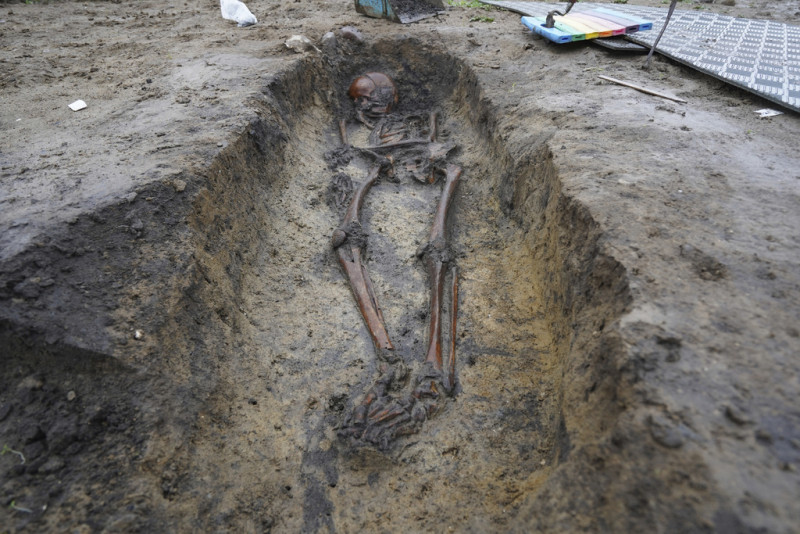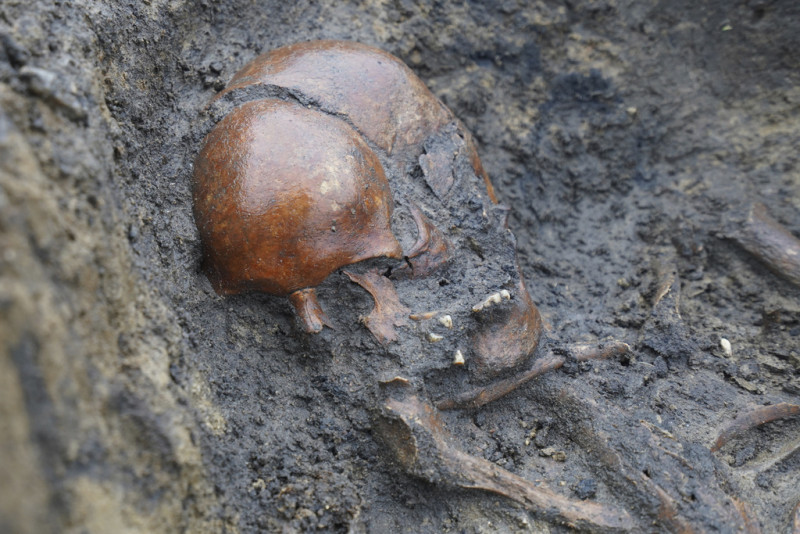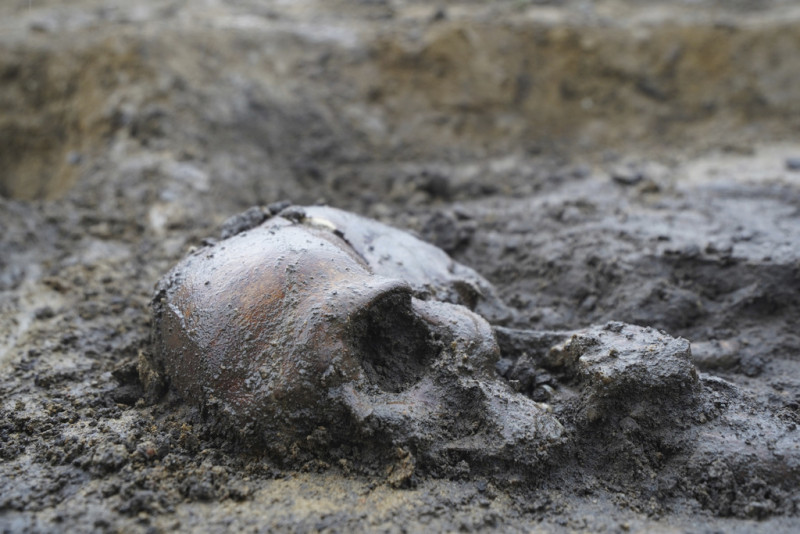The 2,000 square meter burial site houses the remains of men, women and children – Preserved thanks to favorable soil chemistry
Archaeologists made a landmark discovery in one of its villages central Denmark which could contain important clues to the Viking Age. Specifically, they identified a burial site, which contained approx 50 “extremely well-preserved” skeletons, according to the Associated Press.
“This is such an exciting find because we found these skeletons that are so very, very well preserved,” said archaeologist Michael Borre Lundø, who led the dig. “Normally, we’d be lucky to find a few teeth in the graves, but here we have whole skeletons.”
The skeletons were preserved thanks to favorable soil chemistryespecially in chalk and at high water levels, said the experts from Odense Museum. The site was discovered last year during a routine survey ahead of power line renovation work on the outskirts of the village of Aasum, 5 kilometers (3 miles) northeast of Odense, Denmark’s third-largest city.
Experts hope so to perform DNA analyses and possibly reconstruct detailed life histories as well as examine social patterns in the Viking Age such as kinship, migration patterns and more.
“This opens up a whole new toolbox for scientific discovery,” said Borre Lundø. “Hopefully we can do a DNA analysis on all the skeletons and see if they are related to each other and even where they came from.”
During the Viking Age, believed to have lasted from 793 to 1066 AD, Norsemen known as Vikings undertook large-scale raids, colonizing, conquering and trading throughout Europe, even reaching North America .
The Vikings discovered in Aasum were probably not warriors. Borre Lundø believes that the site was probably a “standard settlement”, perhaps a farming community, located 5 km from a ring fortress in present-day central Odense.
The 2,000 square meter burial ground houses the remains of men, women and children. In addition to the skeletons, there are also some cremated bodies.
Archaeologists also discovered pins, necklace beads, knives, and even a small piece of glass that may have served as an amulet.
Borre Lundø said the designs on the pin suggest the dead were buried between 850 and 900 AD.
“There are different levels of burials,” he explained. “Some have nothing with them, others have pins and pearl necklaces.”
Archaeologists say many of the objects came from far beyond Denmark’s borders, shedding light on extensive Viking trade routes during the 10th century.
The burial site was discovered last year and the excavation, which began last April, was completed on Friday. Boxes of objects have been sent to the Odense Museum’s conservation laboratories for cleaning and analysis.
Source :Skai
With a wealth of experience honed over 4+ years in journalism, I bring a seasoned voice to the world of news. Currently, I work as a freelance writer and editor, always seeking new opportunities to tell compelling stories in the field of world news.













